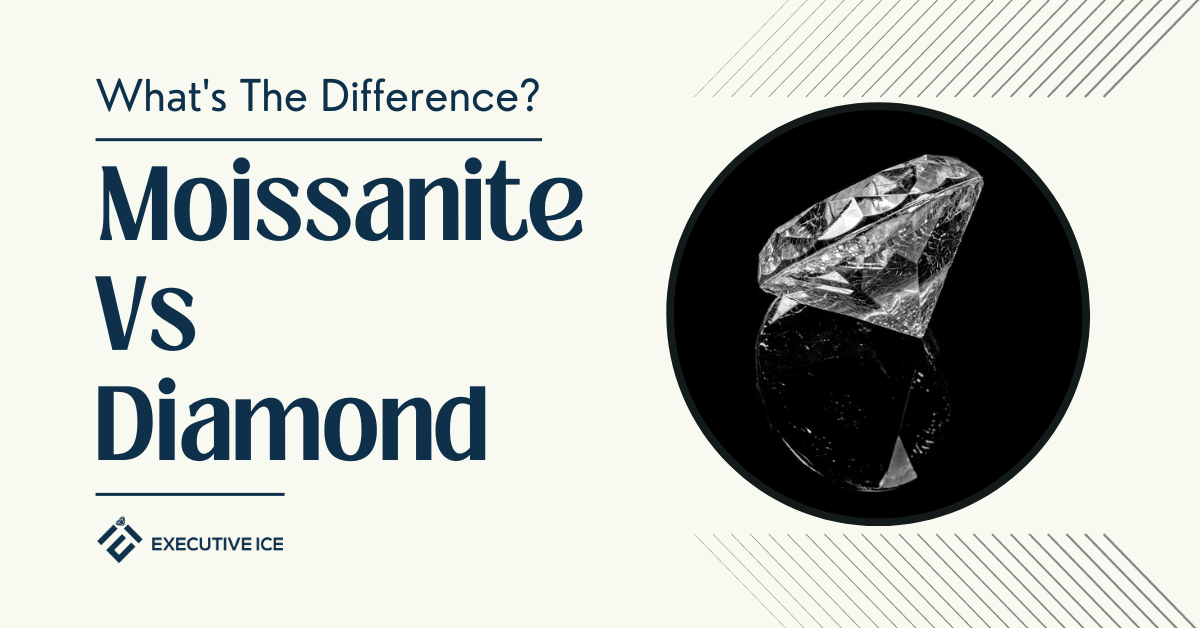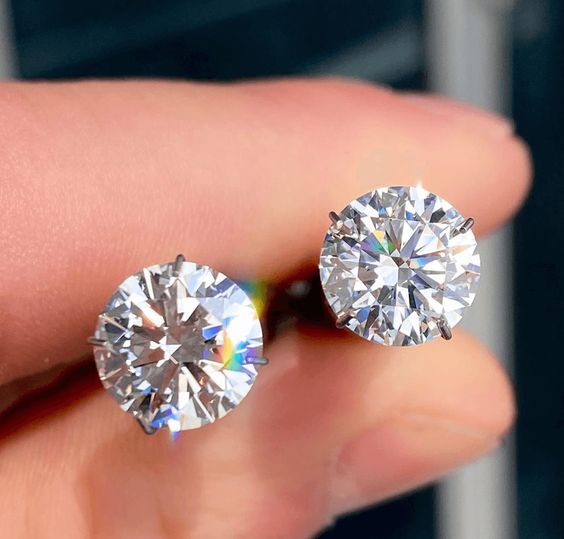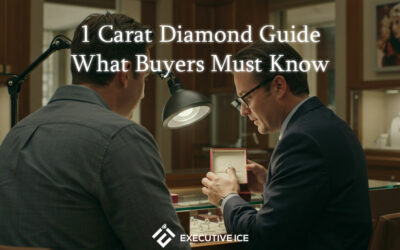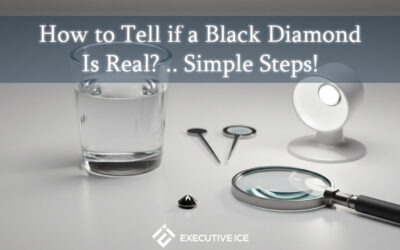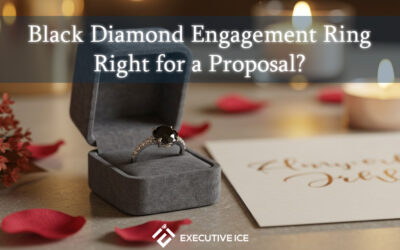With the various luxurious engagement ring options available in the market, it has become quite challenging to choose a diamond ring.
Some people go down in 4Cs, others pick the lab-created diamond way, and some look for alternatives to diamonds, one of those alternatives is a stone called moissanite, a gem similar to diamond in some areas and different in others.
To make your search journey worth the effort, we prepared a comparison between diamond vs moissanite in which we unravel the distinctions and unveil the extraordinary qualities that make each gemstone shine.
What is Moissanite?
Some may think that moissanite is a “fake” diamond but in reality it’s not, because it’s not actually a diamond, it’s a whole other class of precious gemstone.
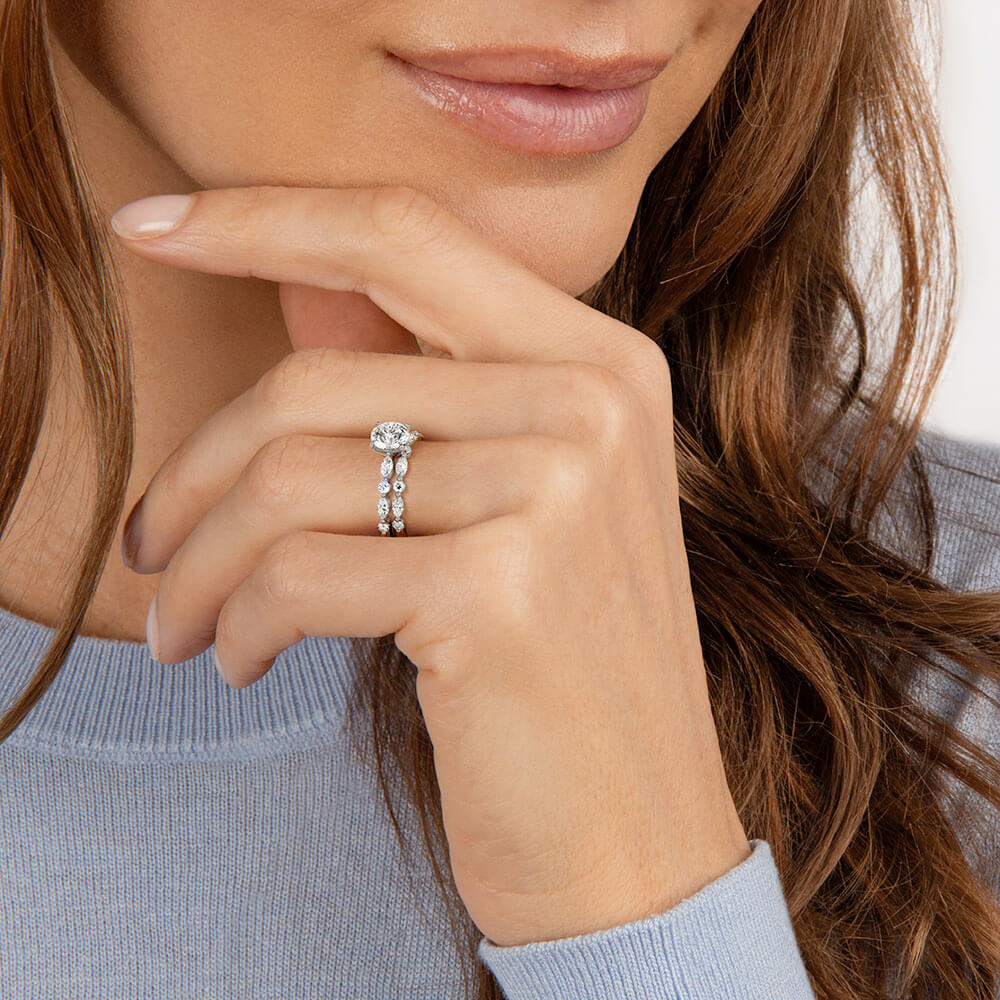
Woman-wearing-a-moissanite-diamond-ring – Brilliant Earth
Moissanite, a naturally occurring silicon carbide stone, is a diamond alternative with remarkable hardness. Initially discovered in 1893, moissanite is now also produced in laboratories, boasting impressive qualities that could defeat those of diamond.
From where it originated? Well, it fell from space – literally. It was first discovered in the late 1800s in the crater of a meteorite in the United States. The crystals that were found were composed on silicon carbide, which is different from earth-based diamonds.
Nowadays, however, any moissanite you find will be lab-created. The name comes from the chemist who first discovered the crystals in that cosmic crater – Henri Moissan.
While moissanite diamonds share similarities with their natural counterparts, they are not classified as real diamonds due to major distinctions between the two, but moissanite is a real gemstone and this answers the controversial question: Are moissanite diamonds?
Join us as we delve into the intriguing realm of diamond vs moissanite, uncovering both their shared characteristics and notable differences.
What Are Diamonds? Natural & Lab-Grown
Diamonds, composed of carbon, are nature’s toughest gemstone. Famous for their hardness, clarity, and significant worth, diamonds captivate with their single-element composition.
Diamonds are available in two distinct types: natural diamonds and lab-grown diamonds, naturals ones are formed deep within the Earth’s crust over billions of years, hold a sense of rarity and mystique.
Lab-grown diamonds, on the other hand, are created in controlled environments, offering a more sustainable and ethically conscious alternative, such as James Allen lab-grown diamonds.
Both natural and lab-grown diamond rings showcase exquisite beauty and are available to buyers all over the world, allowing individuals to embrace their personal style when making their cherished diamond selection from top places that sell lab-grown diamonds.
Diamond vs Moissanite: Key Areas of Comparison
The eternal debate surrounding diamond vs moissanite has sparked lively conversations among jewelry experts, each passionately advocating for the distinctive qualities of these gemstones when searching for the finest diamonds in the market.
When comparing diamond vs moissanite, six key aspects come into play:
- Formation: the natural process by which diamonds or moissanite diamonds are created over an extended period of time deep within the Earth’s crust.
- Durability: it is how well a stone can withstand wear, high temperatures, and exposure to chemicals, showcasing its toughness and hardness.
- Brilliance: the white light a diamond reflects under the sunlight or in any exposure to light.
- Clarity: the absence of inclusions and imperfections in a stone, hence, how clear and pure it is.
- Color: the specific shade exhibited by a diamond, determined according to the GIA diamond color scale.
- Price: the worth or value of a diamond.
By delving into each of these aspects in our understanding of moissanite vs lab diamond or even natural ones, we uncover a wealth of advantages and disadvantages that differentiate moissanite from diamonds, granting you a comprehensive perspective.
As you read about the diamond vs moissanite debate, you can explore the captivating realm of Blue Nile’s engagement rings and choose a diamond ring that matches your preferences.
Let’s get into each part of this comparison to highlight the main differences between diamonds & moissanite.
Formation
When comparing the difference between moissanite and diamond in regards to their formation and what each of them is made of, we find the main difference.
Diamonds consist solely of carbon, while moissanite is composed of silicon carbide, a combination of silicon and carbon. This crucial difference between diamond vs moissanite creates a clear distinction between them across various dimensions, and the most important one is price.
Durability
In terms of durability, experts have determined that diamonds possess a hardness rating of 10 on the Mohs scale, while moissanite falls slightly lower at 9.25-9.5, making it the world’s second-hardest gemstone.
This implies that there is no huge difference between the hardness of moissanite vs lab grown diamond or natural diamonds as both gemstones exhibit remarkable durability and are capable of resisting harsh conditions, whether worn daily or on special occasions, such as the unmatched beauty offered by James Allen diamond rings.
If you are seeking an alternative to diamonds, a moissanite ring is an excellent choice as it exhibits high resilience against scratches even with regular use, making it a highly durable option.
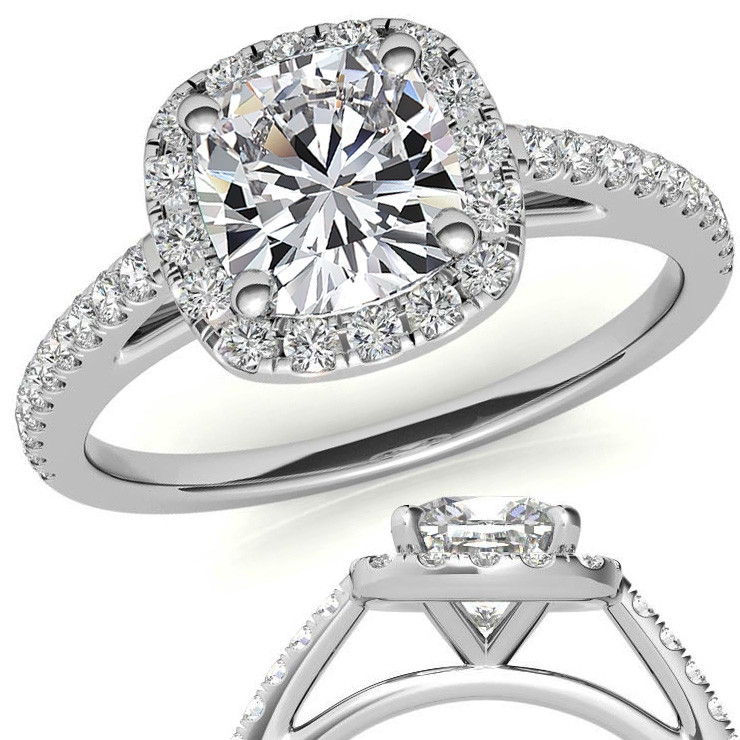
Cushion Cut Petite Halo Moissanite Engagement Ring – MoissaniteCo
Brilliance
When comparing the brilliance of moissanite rings vs diamond under sunlight or radiant settings, moissanite wins for being the most brilliant gemstone in the world. Moissanite’s refractive index surpasses that of an average diamond by 10%, resulting in a stunning and mesmerizing brilliance that outshines any other gemstone
This means that diamond rings come second in terms of brilliance, but you should know that both stones reflect light differently. For example, moissanite reflects rainbow colors while diamond reflects a pure white hue, or to be more accurate, it has a colorless reflection.
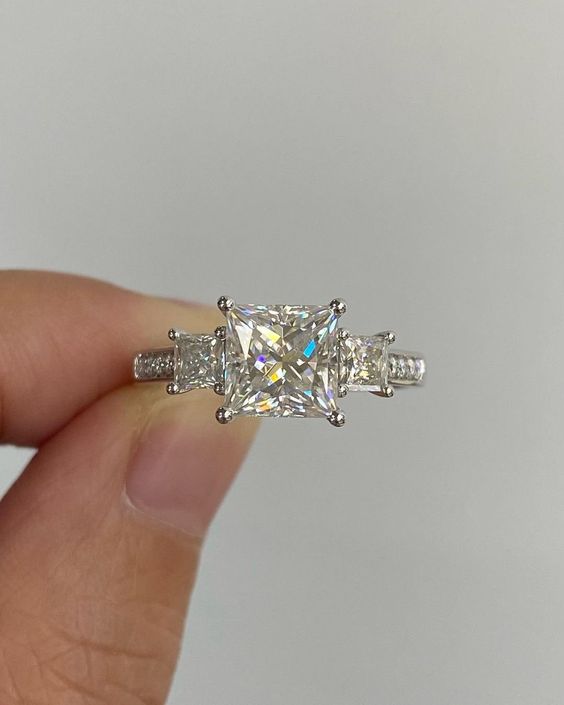
Moissanite diamond ring showing rainbow reflections – Pinterest
If you are enchanted by the rainbow colors stemming from a moissanite diamond ring, we recommend selecting a moissanite ring that showcases this radiant play of colors.
While some buyers adore the vibrant and multi-colored brilliance of moissanite, others may have concerns about its intense sparkle potentially resulting in a “disco-ball” effect, and this’s a huge difference between moissanite and diamond.
For those seeking a gleaming diamond with a pure white appearance, we encourage you to explore the stunning shapes of Blue Nile natural diamond rings, which offer supreme brilliance.
Clarity
Moving now to a new aspect of comparison between moissanite vs lab grown diamond or natural diamonds, it is the clarity of diamond.
Moissanite is clearer than diamond when examined in labs by experts, due to the fact that moissanite has lesser inclusions or imperfections than diamond in both of its types.
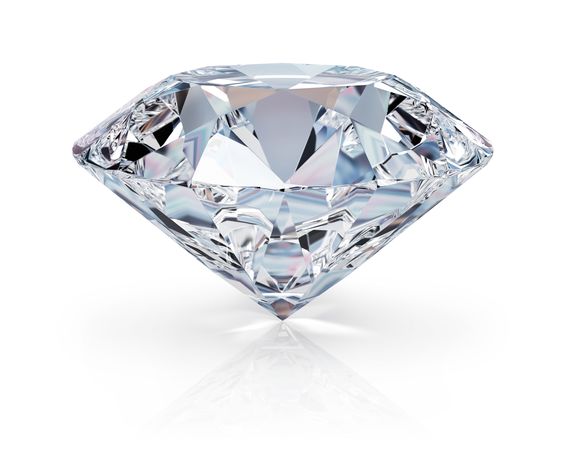
A very clear diamond stone (Pinterest, The Natural Sapphire Company)
Also, the clarity level of a diamond vs moissanite has a direct impact on its value. When comparing the pricing of natural or lab grown diamonds vs moissanite, the clarity grade significantly influences the price and overall worth of both gemstones. Therefore, we advise you to check closely when selecting engagement rings based on their clarity rating.
For a clear diamond ring, check the diverse range of James Allen clear diamond rings, as they offer various clarity options to cater to your preferences.
Color
When it comes to buying a moissanite diamond ring, its light yellowish color is not easily noticeable when the stone’s size is small or medium. However, as the size of the moissanite stone increases, the yellowish color becomes more apparent, so always ponder on the size of the stone when selecting a new moissanite ring for your engagement.
In contrast to the yellowish moissanite diamond, natural or lab-grown diamonds can range from colorless to yellowish, depending on their color grade.
Today, colored diamonds are available everywhere and it’s worth giving them a look, so check out at James Allen pink diamond rings and they also offer purple, pink, yellow, or blue diamond rings.
Price
Knowing the difference between moissanite vs diamond price is essential before setting a budget for your engagement ring, as the price difference between these famous gemstones is high.
Diamond is far more expensive than moissanite, making moissanite diamond price more affordable for buyers. For example, the price of a two-carat diamond can exceed $12,000 whereas a two-carat moissanite can be obtained for approximately $1,200 to $1,500 and this gives you some insight into moissanite costs.
However, when checking engagement rings from Blue Nile or James Allen or any other online store, keep in mind that the size of the stone affects its price hugely. The bigger the diamond, the higher its cost.
Diamonds Prices (Lab vs Natural)
If you made up your mind and decided to go with a diamond ring then you have to know the price difference between natural and lab-grown diamonds.
Even though both of these types are real diamonds, natural diamonds are more expensive than lab-grown ones, making lab-grown diamonds a more budget-friendly option for buyers.
Lab-created diamond rings cost 30-40% less than those extracted from Earth.
Blue Nile diamond engagement rings are absolutely stunning, and they’re perfect for every lady who’s searching for a natural diamond with a budget maxed at $15,000. If you’re looking for other unique and glamorous options, we advise you to check out James Allen 1-carat lab-grown diamond rings.
After closely examining the price of natural and lab grown diamond vs moissanite you can now set your budget!
Where to Buy Moissanite?
Here are some online stores that sell moissanite engagement rings in various shapes and colors:
1. Brilliant Earth: Known for their ethical sourcing and commitment to sustainability, Brilliant Earth offers a wide selection of stunning moissanite stones. They provide detailed information about each stone and have a variety of settings, allowing you to fully customize your jewelry.
2. MoissaniteCo: Offering one of the largest online selections of moissanite jewelry, MoissaniteCo provides excellent customer service, lifetime warranties, and worldwide shipping. Their extensive collection makes it easier to find the perfect moissanite for your jewelry piece.
3. Charles & Colvard: As one of the original creators and producers of moissanite, Charles & Colvard offers an extensive range of these gemstones. The company focuses on high-quality moissanite with excellent cut, clarity, and brilliance, making them a trusted choice for buyers.
4. Forever Moissanite: With a specialization in crafting moissanite engagement rings and wedding bands, Forever Moissanite ensures high quality and craftsmanship in their jewelry. They offer a variety of styles, from classic to modern, allowing customers to find a piece that perfectly suits their style.
5. Moissanite International: Known for their brand ‘SuperNova’, Moissanite International is a global leader in moissanite production and design. They offer premium quality moissanite stones with a strong focus on sustainability and ethical practices.
Advantages of Buying a Moissanite Ring
- Colorful brilliance
- Affordable
- An alternative to diamond
Advantages of Buying a Diamond Ring
- Radiant white brilliance
- Holds a great value
- Incredibly durable
FAQs – Diamond vs Moissanite
What is moissanite diamond?
Moissanite is a lab-created gemstone that is made of silicon carbide and is a great alternative to diamond. However, moissanite isn’t the same as diamond when comparing diamond vs moissanite from all aspects, such as moissanite diamond price which is very affordable against diamonds.
Why are moissanite rings so cheap?
Moissanite rings are cheap because they’re made in labs, which makes them easily created at any time and place. This, however, isn’t the case for diamonds as they’re rarer than moissanite and sellers aren’t always capable of fulfilling the global demand for diamond moissanite jewelry.
We at Executive Ice provided you with all the important information to make the best choice when choosing between diamond vs moissanite and even though it’s a tough choice, always pick the ring that speaks to your heart.
Diamond vs Moissanite: Summary
Choosing between diamonds and moissanite for engagement rings is challenging. Moissanite, though similar to diamonds, is a different gemstone originally discovered in a meteorite.
It’s lab-created now, rivalling diamond’s qualities. Despite their similarities, diamonds, both natural and lab-grown, differ in formation, durability, brilliance, clarity, color, and price.
Moissanite, made of silicon carbide, is more affordable and shows more brilliance and clarity. Diamonds’ price varies based on whether they’re natural or lab-grown.
Stores like Brilliant Earth and Charles & Colvard offer a range of moissanite stones.

